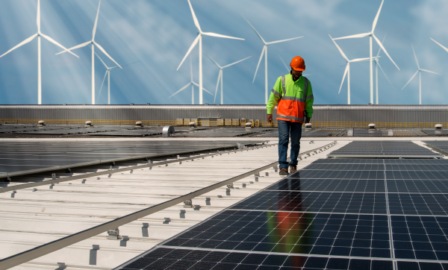2023 Sustainability Trends
Read our updated trends report here: 2024 Sustainability Trends
Clarkston’s team of consultants have highlighted the top sustainability industry trends that businesses should consider. Read all four trends for 2023 by downloading the full report here.
With increased visibility into the impact of environmental degradation in 2022, consumers looked to connect with brands that reflected their beliefs and companies that set ambitious ESG (environmental, social, and governance) goals. Particularly, it was a year of strong focus on renewable energy, net zero initiatives, greenhouse gas emissions, eco-friendly packaging, and ESG investing. Looking to 2023, we expect to see the bar raised for brand transparency, increased use of sustainable materials, sustainable innovation in the tech space, and a boom of products supporting a sustainable lifestyle. Below, we outline four sustainability industry trends that companies and consumers should be aware of in 2023.
2023 Sustainability Trends
Trend #1: Raising the Bar for Brand Transparency
Brand transparency is based on honest and accessible communication of values, goals, and operations – it’s essential for brands to gain consumer trust and build loyalty with their base. More than 90% of consumers say brand transparency drives their purchase decisions. One brand that stands out for its transparency is Clif Bar, which produces an annual Corporate Social Responsibility (CSR) report detailing its commitment to people, the planet, and the community.
In 2023, a popular method of demonstrating brand transparency will be through ethical sourcing. Research suggests that 88% of consumers are more likely to purchase from suppliers whose products are ethically sourced. This involves ensuring that each person involved in the creation of a product is treated and compensated fairly and that its materials are obtained without harm to the communities they come from. Not only does ethical sourcing benefit those involved in a product’s creation, but it can also help businesses meet emerging regulation and reporting requirements as well as increase brand perception.
The link between human rights and sustainability is more visible than ever before, with climate change threatening the human right to air quality, food, water, and sanitation, as well as increasing the risk of extreme weather and infectious diseases. With nearly two-thirds of Millennials and Generation Z consumers demanding that the businesses they purchase from source their products ethically, those that fail to prioritize values will face public scrutiny and difficulty connecting with a consumer base in 2023. For example, this past year, fast-fashion brand Shein faced intense pushback after an undercover investigation accused the company of violating China’s labor laws. Through investing early in ethical supply chains, businesses can save themselves tough questions and moral dilemmas down the line and better connect with a more socially conscious generation of consumers.
Trend #2: The Three Rs – Sustainable Materials
The three Rs (reduce, reuse, and recycle) may be an established concept, but it’s not going out of style any time soon. In 2023, cutting-edge companies will continue to reduce their environmental impact as well as utilize reused and recycled materials in their products. Businesses that create products using sustainable materials will see not only reduced operations costs and a more efficient supply chain, but also a positive impression on consumers. Continue reading by downloading the full report below.
Download the Full 2023 Sustainability Trends Report Here
Read last year’s Sustainability Trends Report here.
Subscribe to Clarkston's Insights
Contributions from Elli Alexander



